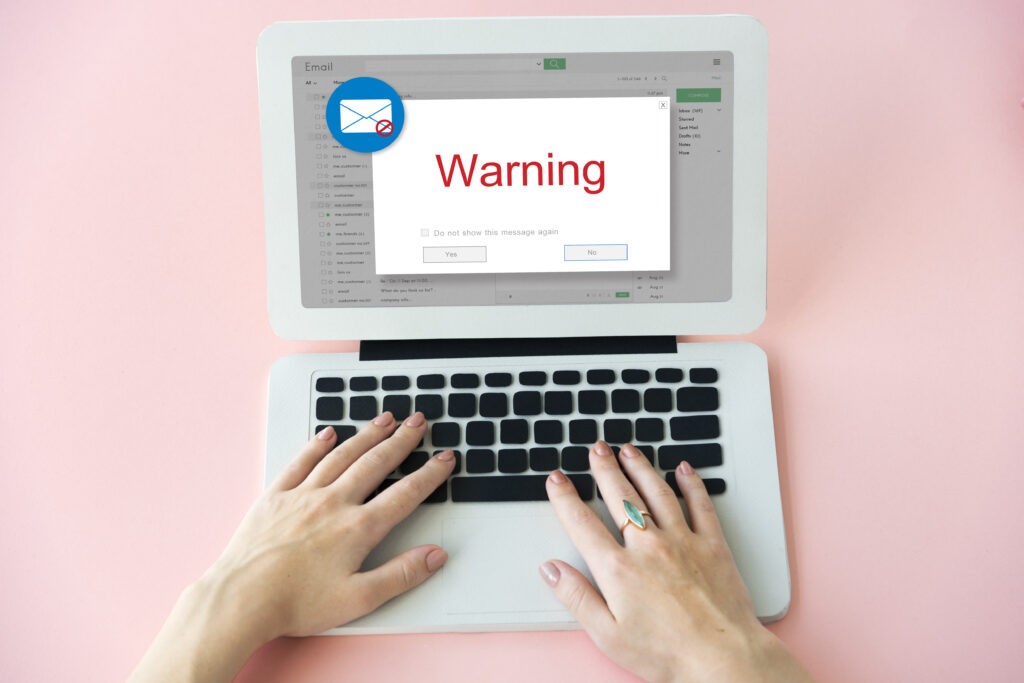Many of our customers frequently question whether an email they’ve received is legitimate or spam. As phishing scams, malware attacks, and unsolicited promotions become increasingly sophisticated, it’s more important than ever to know how to identify and avoid spam emails.
Let’s break down what email spam is, the different types you might encounter, and provide practical tips to help safeguard your inbox. While we can’t guarantee the authenticity of every email, we’ve compiled a set of guidelines that you can use to assess the credibility of emails and protect yourself from potential threats.
What Is Email Spam?
Email spam refers to unsolicited messages sent in bulk, often for advertising, phishing, or spreading malware. In 2022, almost 49% of emails were categorised as spam. These emails are usually irrelevant to the recipient and can clutter inboxes, making it difficult to manage important communications. While some spam is merely annoying, others can be dangerous, aiming to steal personal information or infect devices with harmful software.
Common Types of Email Spam
- Phishing Emails: These emails are designed to mimic communications from trusted entities, such as banks or popular online services, to deceive recipients into disclosing sensitive information like passwords or credit card numbers. Phishing remains a prevalent threat, with 86% of organisations experiencing bulk phishing email attacks in 2022.
- Advertising Spam: Often the most common type, these emails promote products or services that the recipient has no interest in. They may bypass legal requirements, like offering an unsubscribe option, and can flood your inbox with unwanted content.
- Malware Emails: These are particularly dangerous, as they contain malicious attachments or links that, when clicked, can download harmful software onto your device. This software can steal data, monitor activities, or even take control of your device.
- Scam Emails: These emails often promise large sums of money, such as lottery winnings or inheritances, in exchange for personal information or an upfront payment. They are designed to exploit vulnerable individuals.
To ensure your organisation is fully protected against phishing attacks and other cyber threats, consider a comprehensive cybersecurity assessment. Learn more about what’s involved and how it can fortify your defences by reading our detailed guide here.

Our Top 5 Tips for Identifying a Spam Email
- Contact the Company Directly
One of the most reliable ways to verify an email’s authenticity is to contact the company directly by phone. Ask to speak with the person who supposedly sent the email. They can confirm whether the email genuinely came from them or if it’s a potential scam. - Examine the Sender’s Domain
Pay close attention to the domain of the sender’s email address—the part between the @ symbol and the domain suffix (.com, .co.uk, etc.). If the domain name is even slightly different from the official company domain or what you’re accustomed to, it could be a sign of a phishing attempt. Ensure it matches the company’s website address or other legitimate communications from the company. - Verify the Phone Number
If the email includes a phone number, do a quick search on Google. If the number doesn’t yield any results or doesn’t match the contact information on the organisation’s official website, it’s likely a spam email. - Check the Sender’s Credibility
For emails from unfamiliar individuals or organisations, consider running a quick credit check or searching for their registration on Companies House (for UK companies). Additionally, check if they have long-standing, active social media profiles, which can be an indicator of legitimacy. - Consider Whether You Were Expecting the Email
Take a moment to think about whether you were expecting this email. If it’s unexpected and you only share your email with trusted contacts, this could be a red flag. Always be cautious with unsolicited emails.
What to Do If You Suspect an Email is Spam
If any of these checks make you suspicious, avoid opening any attachments or clicking on links within the email. If you’ve already clicked on a link, it’s important to immediately reset your password and run a comprehensive security and antivirus scan on your device. If you’re certain the email is spam, right-click and select “Mark as Spam” to help your email provider block similar messages in the future. Additionally, it’s wise to inform your colleagues or customers about the potential threat, enabling them to take the necessary precautions to protect themselves.
Here are a few more tips to keep in mind:
- Don’t Engage with Spam: Never respond to spam emails, click on any links, or download attachments. Engaging with these emails can signal that your address is active, potentially leading to an increase in spam.
- Unsubscribe with Caution: If you receive unwanted emails from legitimate sources, use the unsubscribe option at the bottom of the email. However, be cautious when unsubscribing from emails that look suspicious, as the links could be part of a phishing scam.
- Keep Your Software Updated: Regularly update your email client, antivirus software, and operating system. Security updates often include important patches that protect against the latest threats.
For more information about how you can protect yourself and your organisation, contact us today.




